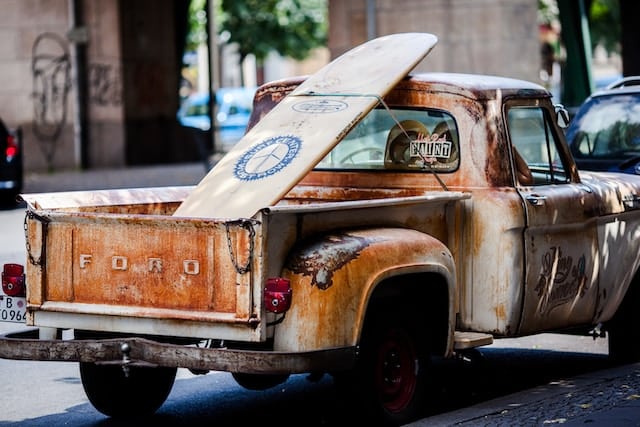Rust Prevention: Keeping Your Car in Pristine Condition
 Rust is the bane of many car owners, particularly those living in areas with high humidity or that use road salt in the winter. It can significantly affect a vehicle’s structural integrity and resale value. Understanding how to prevent rust is crucial for maintaining your car’s longevity and appearance.
Rust is the bane of many car owners, particularly those living in areas with high humidity or that use road salt in the winter. It can significantly affect a vehicle’s structural integrity and resale value. Understanding how to prevent rust is crucial for maintaining your car’s longevity and appearance.
The Science Behind Rust Formation
Rust, or iron oxide, occurs when iron in the metal of your car reacts with oxygen and moisture. This reaction is accelerated by factors like salt, which is why cars in colder climates, where roads are salted in the winter, are more prone to rust. Even a small scratch or chip in the paint can expose the metal underneath to the elements, starting the rusting process.
Regular Washing and Waxing
Regular cleaning is one of the most effective ways to prevent rust. Dirt, salt, and other materials can hold moisture against the car’s surface, accelerating rust formation. Washing your car every two weeks, and more frequently in winter, can significantly reduce this risk. Following up with a good quality wax provides an additional protective layer.
Prompt Paint Damage Repair
Small chips or scratches in your car’s paint expose the underlying metal to air and moisture, making these areas prone to rust. Addressing any paint damage promptly is essential. Small touch-ups can often be done at home with the right tools and a bit of know-how.
Undercarriage Care
The undercarriage of your car is particularly susceptible to rust because it’s closest to the road, where it’s exposed to dirt, debris, and salt. Regular cleaning and applying a protective coating can help to shield these vulnerable areas from rust.
Using Rust-Proofing Products
Various products on the market can add an extra layer of protection against rust. Rust inhibitors can be sprayed onto the car’s body to prevent rust, while rust converters can be used on areas that have already started to rust, stopping the process and preventing further damage.
Keeping Drain Plugs Clear
Cars are designed with drain plugs in areas like the doors and undercarriage to allow water to flow out. Ensuring these remain clear and unblocked is important to prevent water from accumulating and causing rust.
Proper Storage
Where and how you store your car can also impact its susceptibility to rust. A garage or covered area is ideal, especially if it’s well-ventilated to prevent moisture build-up. If you don’t have access to indoor storage, a breathable car cover can help protect against the elements.
Avoiding Prolonged Exposure to Salt
If you live in a region that uses road salt, try to avoid driving right after roads have been salted or when salt residue is visible. Washing your car soon after exposure to salt can also help minimize the risk of rust.
Regular Inspections
Regularly inspecting your car for signs of rust can help catch and address problems early. Pay special attention to areas where rust commonly forms, such as wheel wells, undercarriage, and lower doors.
Conclusion
Rust can be a significant problem for car owners, but with the right preventive measures, it’s possible to keep your car in pristine condition for years. Regular maintenance, prompt repairs, and protective coatings are key to preventing rust and maintaining your vehicle’s integrity and value.
